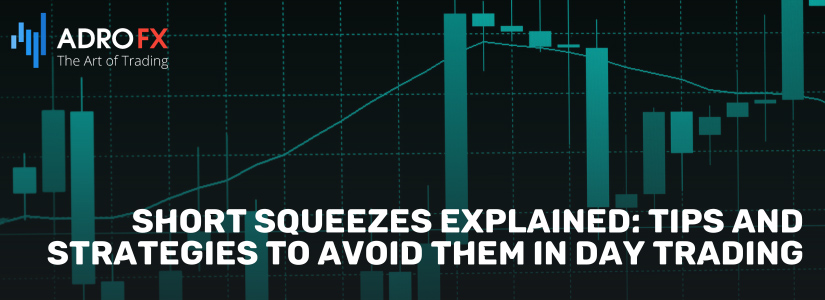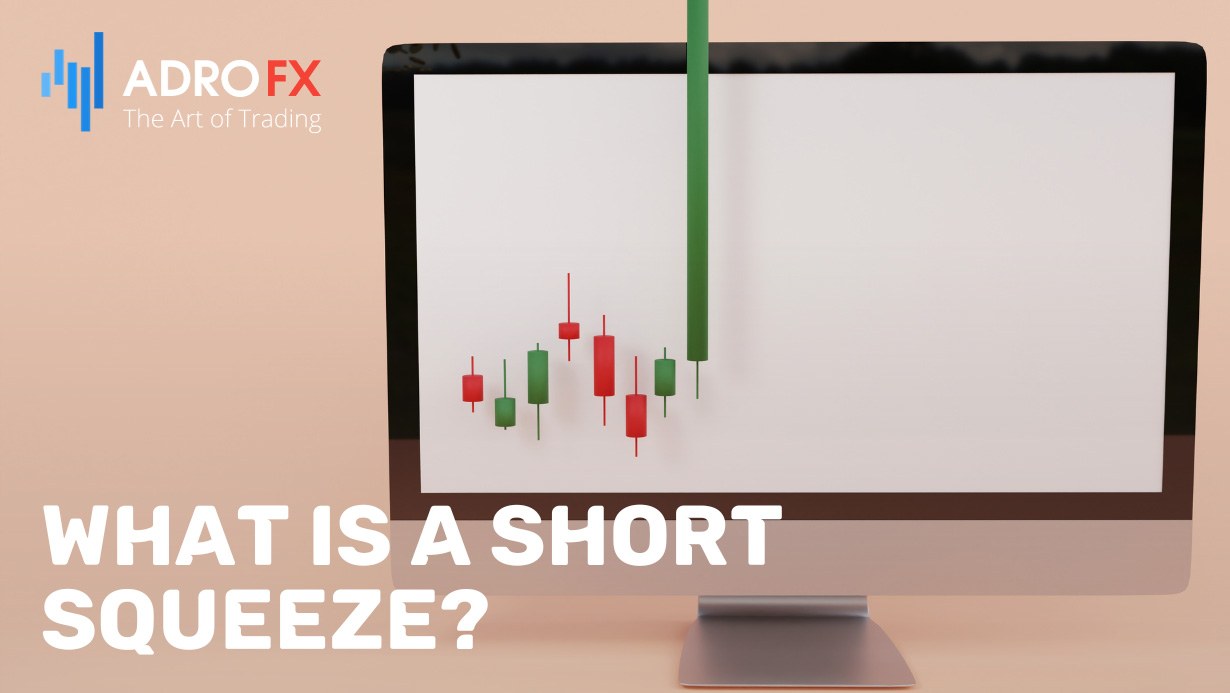Short Squeezes Explained: Tips and Strategies to Avoid Them in Day Trading

Day trading is a high-stakes game where traders seek to capitalize on the volatile movements of stocks, commodities, or other financial instruments within a single trading day. It's a strategy that demands quick thinking, keen analysis, and a deep understanding of market dynamics. One aspect of day trading that can catch traders off guard is the phenomenon known as a "Short Squeeze." A Short Squeeze is a market event that has the potential to significantly impact a trader's positions, and understanding how to avoid or navigate these squeezes is crucial for day traders.
In this article, we'll delve into the intricate world of day trading and explore the concept of Short Squeezes. We will define what a Short Squeeze is and examine the factors that contribute to its occurrence. Furthermore, we'll equip you with essential strategies and insights to help you minimize the risks associated with Short Squeezes, and even potentially turn them into profitable opportunities.
Whether you're a seasoned day trader or someone looking to enter this fast-paced field, understanding Short Squeezes and how to mitigate their impact is vital for your success. So, let's begin our journey to unravel the intricacies of Short Squeezes and empower you to trade with confidence in even the most turbulent market conditions.

What is a Short Squeeze?
A Short Squeeze is a fascinating and often nerve-wracking phenomenon that occurs in the world of day trading, and it is essential to grasp its dynamics. In simple terms, a Short Squeeze transpires when a surge in the price of a stock or asset, often driven by unexpected positive news or a rapid uptrend, forces traders who had bet against that stock (short-sellers) to cover their positions. This can set off a chain reaction, as covering these positions necessitates buying the stock, which, in turn, further drives up its price.
Imagine a scenario where you initially borrowed a stock with the expectation that its price would decrease. However, if the stock's value starts to rise, you may find yourself in a precarious situation. To mitigate potential losses, you'll need to buy back the borrowed shares at the elevated market price, leading to a rush of buying activity. This heightened demand can create a self-reinforcing cycle of rising prices, causing short-sellers to scramble to exit their positions, ultimately driving the stock even higher.
The result? A Short Squeeze can swiftly transform a trading strategy from anticipation of profit to a frantic race to limit losses. Understanding how and why Short Squeezes occur is vital for day traders looking to safeguard their investments and potentially exploit these market events to their advantage. In the following sections, we'll delve deeper into the mechanics of Short Squeezes and explore strategies to steer clear of their potential pitfalls.
What Happens After a Short Squeeze?
The aftermath of a Short Squeeze is a critical phase that can significantly impact the market and traders involved. Once a Short Squeeze has run its course and short-sellers have been forced to cover their positions, several outcomes and dynamics come into play:
- Price Stabilization
After the initial frenzy of buying by short-sellers to cover their positions, the stock's price may stabilize. The extent to which it stabilizes depends on various factors, including the stock's fundamentals, market sentiment, and the strength of the Short Squeeze. - Volatility Reduction
The extreme price volatility that characterizes a Short Squeeze phase often subsides as the situation normalizes. This can be a relief for traders, especially those who prefer calmer waters. - Long-Term Implications
A Short Squeeze can sometimes reveal underlying weaknesses or strengths in a stock. In some cases, it may be a sign that a stock was heavily shorted for a reason, such as declining fundamentals or an impending event. Conversely, it might underscore bullish sentiment and resilience if the stock recovers quickly from the Short Squeeze. - Market Sentiment Shifts
Traders and investors who witness a Short Squeeze may reassess their perception of a stock or the market as a whole. It can alter the overall sentiment and influence future trading strategies. - Profit and Loss Realization
Some traders, especially those who entered short positions at the wrong time, may experience significant losses as a result of the Short Squeeze. Conversely, traders who anticipated the Squeeze or managed to exit their short positions at the right time may realize profits. - Regulatory Scrutiny
In cases where a Short Squeeze garners significant attention, it may attract regulatory scrutiny. Authorities may investigate the market activity to ensure that trading practices were in compliance with established rules and regulations. - Learning Opportunity
A Short Squeeze can be a valuable learning experience for traders. It highlights the importance of risk management, awareness of market sentiment, and the need to stay informed about a stock's fundamentals and news flow.
Understanding what typically happens after a Short Squeeze is crucial for day traders seeking to navigate these events effectively. It allows traders to make informed decisions about their positions and strategies, helping them adapt to the changing market landscape and capitalize on emerging opportunities. In the subsequent sections, we will explore strategies and tips for traders looking to avoid or profit from Short Squeezes.

Predicting Short Squeezes
Anticipating the occurrence of a short squeeze involves a multifaceted analysis that includes the interpretation of daily moving average charts, as well as calculations of short interest percentage and the short interest ratio.
Short Interest Percentage
The initial factor to consider is the short interest percentage, which can be determined by dividing the number of shorted shares by the total number of shares outstanding. For example, if short sellers have sold 20,000 shares of Company A, and there are 200,000 shares of the stock outstanding, the short interest percentage would amount to 10%. The significance of this percentage lies in the fact that the higher it is, the greater the number of short sellers competing to repurchase the stock if its price embarks on an upward trajectory. A higher short interest percentage indicates a potentially more intense Short Squeeze environment. (For more details, see: Understanding Short Interest.)
Short Interest Ratio
The short interest ratio, on the other hand, is calculated by dividing the short interest by the average daily trading volume (ADTV) of the particular stock. For instance, if 200,000 shares have been shorted, and the stock in question has an ADTV of 40,000 shares, it would require approximately five days for the short sellers to buy back their shares. A higher ratio signifies a greater probability that short sellers will contribute to driving the stock's price upwards. A short interest ratio of five or higher can serve as a valuable indicator that short sellers might become anxious, creating an opportune moment to consider trading a potential Short Squeeze.
Daily Moving Average Charts
Daily moving average charts provide insights into a stock's trading patterns over a specified time period. A 50-day or longer moving average chart can unveil notable price fluctuations in a stock. To access these charts, you can explore various charting software programs that are readily available. They enable you to overlay this data on the chart of your chosen stock, facilitating your analysis.
It is crucial to remain informed about news headlines as well, as they can act as catalysts for Short Squeezes. Staying abreast of developments in your stock's industry or sector can be a key component of your strategy.

How to Avoid a Short Squeeze
Avoiding a Short Squeeze in day trading is a critical skill to safeguard your investments and mitigate potential losses. While Short Squeezes can be unpredictable, there are several strategies and practices you can employ to reduce your exposure and navigate the market with greater confidence:
- Diligent Research
Thoroughly research the stocks you plan to trade. Understand their fundamentals, recent news, and any impending catalysts that could trigger a Short Squeeze. A well-informed trader is better equipped to anticipate and respond to changing market conditions. - Risk Management
Implement strict risk management practices. Set Stop Loss orders and adhere to them. Determine the maximum amount you are willing to risk on a trade and stick to it. This ensures that a Short Squeeze doesn't lead to catastrophic losses. - Use Technical Analysis
Employ technical analysis to identify potential entry and exit points. Technical indicators and chart patterns can help you make more informed trading decisions and reduce the likelihood of entering a short position right before a Short Squeeze. - Stay Informed
Continuously monitor news and social media for developments that could impact the stocks you're trading. A sudden influx of positive news or social media buzz can trigger a Short Squeeze. - Diversify Your Portfolio
Don't put all your capital into a single stock or trade. Diversify your portfolio to spread risk and reduce the impact of a Short Squeeze on your overall investments. - Hedge Your Positions
Consider using options or other hedging strategies to protect your positions. These instruments can act as insurance against sudden price surges in the opposite direction. - Avoid Highly Shorted Stocks
Be cautious when trading stocks with an unusually high short interest. These stocks are more susceptible to Short Squeezes, as a rapid price increase can force numerous short-sellers to cover their positions simultaneously. - Monitor Trading Volume
Pay close attention to trading volume. A sudden spike in volume without an apparent reason could be a warning sign of a potential Short Squeeze. - Have a Clear Exit Strategy
Before entering a trade, define your exit strategy. Know when you will take profits or cut your losses. Stick to your plan even in the face of market volatility. - Stay Calm and Avoid Herd Mentality
During a Short Squeeze, emotions can run high, and it's easy to succumb to herd mentality. Maintain discipline, avoid impulsive decisions, and base your actions on your analysis and strategy.
While it's impossible to completely eliminate the risk of a Short Squeeze in day trading, a combination of these strategies can help you minimize the impact and potentially capitalize on these market events. The key is to stay informed, be prepared, and always prioritize risk management to trade with confidence.
Conclusion
In the dynamic world of day trading, where market volatility reigns supreme, understanding Short Squeezes and mastering the strategies to avoid or navigate them is paramount. Day traders are constantly at the forefront of market fluctuations, requiring sharp insights and quick thinking to thrive in this challenging arena. Short Squeezes, with their capacity to dramatically alter the trading landscape, present both risks and opportunities that demand careful consideration.
This comprehensive guide has illuminated the intricacies of Short Squeezes, delving into their definition, the mechanics that fuel them, and the potential consequences that follow their eruption. Armed with this knowledge, traders can better equip themselves to adapt and respond to the ever-evolving market conditions.
For those who seek to steer clear of Short Squeezes, a set of strategic tools and principles has been outlined. Diligent research, risk management, and technical analysis are essential elements for avoiding the pitfalls of Short Squeezes. Diversification, the use of hedging mechanisms, and the careful selection of stocks can further safeguard one's position in the turbulent sea of day trading.
Moreover, this article has also shed light on the critical importance of monitoring short interest percentages and ratios, daily moving average charts, and staying informed about news and developments that can act as catalysts for Short Squeezes. By paying close attention to these factors, traders can better predict and prepare for potential market upheavals.
In the fast-paced world of day trading, a solid understanding of Short Squeezes and the implementation of prudent strategies provide traders with a valuable edge. Whether you're a seasoned trader or someone embarking on this exhilarating journey, the insights and tactics shared here are your compass for navigating the complexities of Short Squeezes and achieving success in even the most turbulent market conditions.
About AdroFx
Established in 2018, AdroFx is known for its high technology and its ability to deliver high-quality brokerage services in more than 200 countries around the world. AdroFx makes every effort to keep its customers satisfied and to meet all the trading needs of any trader. With the five types of trading accounts, we have all it takes to fit any traders` needs and styles. The company provides access to 115+ trading instruments, including currencies, metals, stocks, and cryptocurrencies, which make it possible to make the most out of trading on the financial markets. Considering all the above, AdroFx is the perfect variant for anyone who doesn't settle for less than the best.










